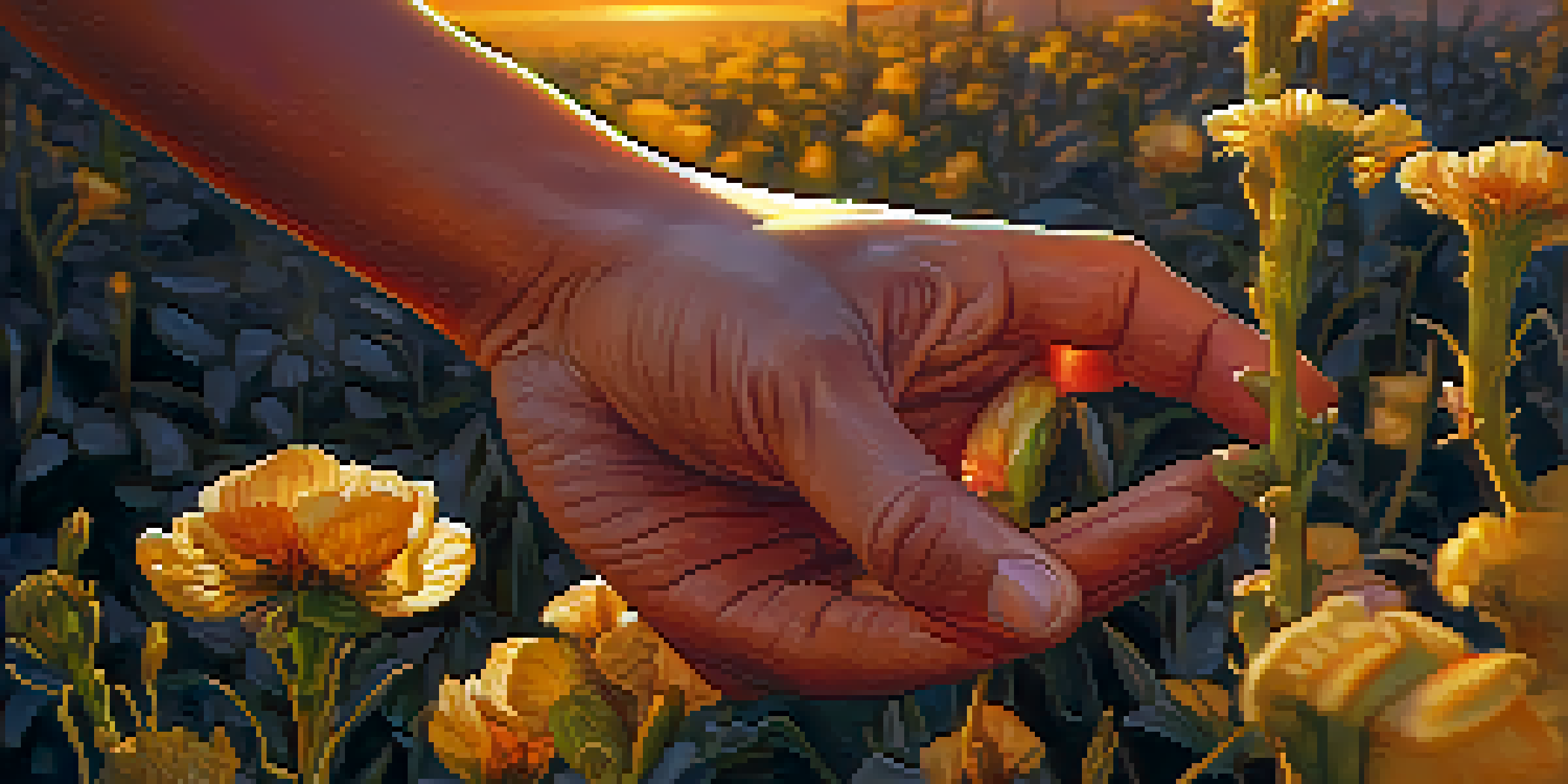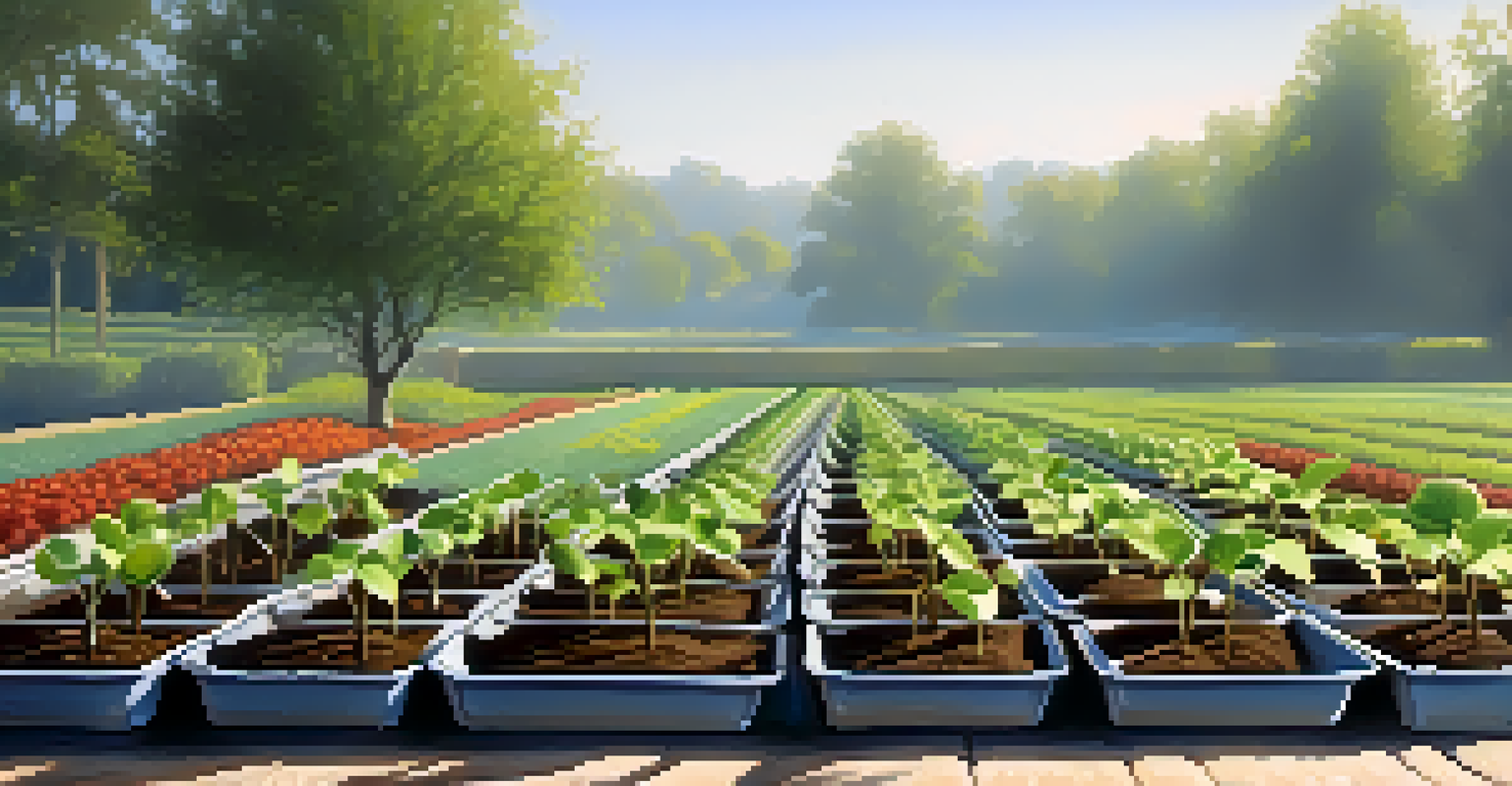Understanding Seed Propagation: A Comprehensive Guide

What is Seed Propagation and Why is it Important?
Seed propagation is the process of growing new plants from seeds. It's essential for gardeners and farmers alike, as it allows for the reproduction of plant species and the cultivation of food. By understanding seed propagation, you can ensure a steady supply of healthy plants, whether for your garden or agricultural purposes.
To plant a garden is to believe in tomorrow.
This method is not only cost-effective but also promotes biodiversity. When you propagate plants from seeds, you are helping to preserve various plant varieties, which is crucial for ecosystem health. Additionally, starting plants from seeds gives you more control over their growth conditions, leading to stronger, more resilient plants.
Ultimately, mastering seed propagation can enhance your gardening experience. It opens up a world of possibilities, allowing you to experiment with different plants and varieties, and can even lead to a deeper appreciation for nature and the plant life around you.
Types of Seed Propagation: Sexual vs. Asexual
Seed propagation can be divided into two primary types: sexual and asexual. Sexual propagation involves the reproduction of plants from seeds, which are formed through the fertilization of flowers. This method results in genetic diversity, as the offspring will inherit traits from both parent plants.

On the other hand, asexual propagation is achieved through various techniques, such as cuttings, layering, or division. This method produces clones of the parent plant, ensuring that the new plants will have the same characteristics. Asexual propagation can be especially useful for preserving desirable traits or for propagating plants that do not produce viable seeds.
Importance of Seed Propagation
Seed propagation is crucial for sustaining plant diversity and ensuring a steady supply of healthy plants for gardens and farms.
Understanding the differences between these two methods is crucial for any gardener. Depending on your goals, you may choose one approach over the other, or even combine both to achieve the best results in your garden.
How to Collect Seeds: Timing and Techniques
Collecting seeds at the right time is vital for successful propagation. Generally, seeds should be harvested when the fruits are fully ripe but before they start to decompose. This timing ensures that the seeds are mature and have the best chance of germination, leading to healthy new plants.
The Earth laughs in flowers.
There are several techniques for collecting seeds, including hand-picking, using bags, or shaking plants to release seeds. It's important to handle seeds gently to avoid damaging them. Additionally, be sure to label your seeds with the plant type and collection date to keep track of your harvest.
Once collected, seeds should be dried and stored properly to maintain viability. A cool, dry place is ideal for seed storage, and using airtight containers can help prolong their lifespan, ensuring that you have a ready supply for future planting.
Preparing Seeds for Planting: Stratification and Scarification
Before planting, some seeds require specific preparations to enhance germination. Stratification mimics natural winter conditions, helping seeds to break dormancy. This process usually involves placing seeds in a moist medium and storing them in a refrigerator for a certain period, depending on the species.
Scarification is another method that involves physically damaging the seed coat to promote germination. This can be done by gently sanding or nicking the seed surface, or soaking the seeds in hot water. Understanding these techniques can significantly improve your germination rates, especially for tougher seed varieties.
Preparing Seeds Enhances Germination
Techniques like stratification and scarification can significantly improve germination rates for various seed types.
By taking the time to prepare your seeds properly, you're setting yourself up for success. These small steps can make a big difference in the health and vigor of your plants once they're in the ground.
Soil Preparation for Seed Germination: Tips and Tricks
The foundation of successful seed propagation starts with high-quality soil. Well-draining, nutrient-rich soil provides the ideal environment for germination. Before planting, consider testing your soil to ensure it has the right pH and nutrient levels for the specific seeds you're using.
Incorporating organic matter, such as compost or well-rotted manure, can enhance soil fertility and structure. This not only provides essential nutrients for your seedlings but also improves moisture retention, which is crucial during the germination process. A good soil mix can be the difference between thriving plants and struggling seeds.
Additionally, consider using seed trays or pots with proper drainage holes to prevent waterlogging. Good drainage is critical for young plants, as it helps them develop strong root systems and prevents issues like root rot.
Watering Techniques for Successful Seed Germination
Watering is a key factor in seed germination, as it activates the seed's growth processes. However, finding the right balance is essential—too much water can drown seeds, while too little can cause them to dry out. A gentle misting or bottom watering method can help maintain the right moisture level without overwhelming the seeds.
It's also important to monitor the soil's moisture content regularly, especially in the early stages of germination. Using a moisture meter can provide insight into when to water, ensuring that your seeds receive just the right amount of hydration. Keeping the soil consistently damp but not soggy is crucial for healthy seedling development.
Addressing Common Propagation Issues
Identifying challenges such as poor germination or pests early can help gardeners take effective measures to ensure successful seed propagation.
As the seedlings grow, gradually reduce the frequency of watering to encourage deeper root growth. This process helps seedlings become more resilient and better prepared for outdoor conditions once they are ready for transplanting.
Transplanting Seedlings: When and How to Move Them
Transplanting seedlings requires careful timing and technique to ensure their success. Generally, seedlings should be transplanted when they have developed at least two sets of true leaves, indicating they are strong enough to handle the transition. This is often referred to as the 'true leaf stage' and is a good indicator that they are ready for the next step.
When transplanting, be sure to handle the seedlings gently to avoid damaging their delicate roots. It's best to transplant on a cloudy day or in the late afternoon to minimize stress from sun exposure. Additionally, prepare the new planting site by loosening the soil and mixing in some compost to give your seedlings a nutrient boost.

After transplanting, water the seedlings thoroughly to help settle the soil around the roots. This initial watering helps reduce transplant shock and encourages healthy growth as they acclimate to their new environment.
Common Challenges in Seed Propagation and Solutions
Like any gardening endeavor, seed propagation comes with its own set of challenges. Some common issues include poor germination rates, pests, and diseases that can affect your seedlings. Identifying these challenges early can help you take proactive measures to ensure your plants thrive.
To combat poor germination, consider experimenting with different soil mixes or adjusting your watering techniques. If pests are a problem, using natural remedies, such as neem oil or insecticidal soap, can help protect your seedlings without harming the environment. Regularly inspecting your plants can also help you catch any issues before they escalate.
Lastly, continue to educate yourself about best practices in seed propagation. Joining gardening communities or forums can provide valuable insights and support from fellow gardeners. Sharing experiences and solutions can make your propagation journey much smoother and more enjoyable.